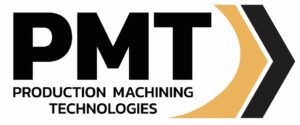Welcome to our exploration of two pivotal manufacturing techniques that are shaping the industry: additive vs subtractive manufacturing. As technology advances, understanding the distinct differences and applications of 3D printing and CNC machining becomes essential. Whether you're a hobbyist looking to create intricate models or a professional aiming to enhance production processes, this is a comprehensive look into how both methods work, their advantages, and how they compare.
Understanding Additive Manufacturing: The Revolution of 3D Printing
Additive manufacturing, commonly known as 3D printing, stands out distinctly from traditional methods by building objects layer by layer, each one a precise addition to the next. This fundamental difference makes it a cornerstone in the conversation about additive vs subtractive manufacturing processes. One of the significant advantages of additive manufacturing is its ability to create complex shapes and intricate designs that would be nearly impossible or too costly with subtractive methods. This capability combined with additive manufacturing software not only opens up new avenues for innovation across various industries, including aerospace, healthcare, and automotive, but also significantly reduces waste by using only the material necessary to build the object.
Further enhancing its appeal, 3D printing has democratized the production capabilities, making it accessible to not only large manufacturers but also small businesses and individual hobbyists. Its versatility allows for the creation of tailored products that meet specific needs without the significant setup or tooling costs associated with subtractive methods. By contrasting subtractive and additive techniques, it becomes evident that while both have their place in the manufacturing landscape, additive methods are uniquely positioned to adapt quickly to design changes and execute complex customizations seamlessly. This flexibility is crucial as industries push for more innovative and sustainable manufacturing solutions.
The Precision of Subtractive Manufacturing: Exploring CNC Machining
Transitioning from the innovative layers of additive manufacturing, let's focus on the precision and reliability of subtractive manufacturing, particularly CNC machining. As the name implies, subtractive manufacturing involves removing material to create parts, a stark contrast from the additive approach. CNC machines, which stand for Computer Numerical Control, employ drills, lathes, and mills to carve out components from metal or plastic blocks. Intricate and precise, this technique is quintessential in industries that require exact specifications, tight tolerances, and smooth finishes. This method doesn't just excel in precision; it also provides unparalleled strength in finished products, making it ideal for sectors like aerospace and automotive where reliability is paramount.
While additive manufacturing revolutionizes with its complex and customizable design capabilities, subtractive manufacturing holds its ground with its robustness and accuracy. CNC machining stands as a testament to the high-quality, durable components it can consistently produce, showcasing yet another essential player in the discourse on 'additive vs subtractive' manufacturing. The two methods may seem at odds, but understanding both their strengths can vividly paint a picture of their respective roles in modern manufacturing. From rapid prototyping facilitated by 3D printing to the unyielding precision of CNC machining, the narrative of additive vs subtractive becomes not just a comparison but a collaboration, opening pathways to leverage the advantages of additive manufacturing and its counterpart for enhanced industrial outcomes.
Additive vs Subtractive Manufacturing: Comparing Advantages and Processes
The discussion surrounding 'additive vs subtractive' manufacturing is rich with contrasts and complements, particularly when we examine the advantages and the processes inherent to each method. Additive manufacturing, often exemplified by 3D printing, primarily thrives on its flexibility and efficiency in material usage. Unlike its subtractive counterpart, this technique builds components layer by layer, allowing for intricate designs previously deemed impossible or too costly to achieve with traditional methods. This not only reduces waste but also opens up a realm of creative possibilities, empowering designers to experiment and innovate without the constraints of traditional manufacturing sequences. Moreover, the advantages of additive manufacturing extend into customization, where unique parts are crafted without the need for retooling, enhancing speed in product development cycles and facilitating rapid prototyping.
On the other hand, subtractive manufacturing brings its own set of merits, especially in the production of metallic parts necessary in high-stress environments. Precision remains a hallmark of subtractive processes, where high-end CNC machines meticulously carve out parts with exceptional accuracy. The physical properties of materials remain intact since they are merely shaped, not melted or resolidified, imbuing them with inherent strength and longevity. Additive vs subtractive scenarios often highlight this aspect: while additive is superb for geometric and design complexity, subtractive excels in material integrity and durability. Grasping these dynamics not only helps in choosing the right method for a particular application but also enhances cooperation between them, ensuring that the strengths of one compensate for the limitations of the other in hybrid manufacturing strategies.
Navigating the intricate world of manufacturing techniques requires a deep understanding of both additive and subtractive methods. Each has its own unique benefits, tailored for specific needs—additive manufacturing allows for incredible design freedom and efficiency, while subtractive manufacturing offers unmatched durability and material integrity. At PMT, we understand these nuances and are dedicated to helping you find the perfect manufacturing solution.
We specialize in selling and supporting ESPRIT CAM software, a powerful tool designed to streamline and enhance both additive and subtractive manufacturing processes. Our expert team also offers comprehensive training services to ensure you're equipped to make the most of this sophisticated technology. Whether you're looking to push the envelope of what's possible in design, or need a robust method for creating durable components, PMT is here to assist. Get in touch today and discover how we can help you harness the full potential of advanced manufacturing technologies, ensuring your projects are not just completed, but excel.
